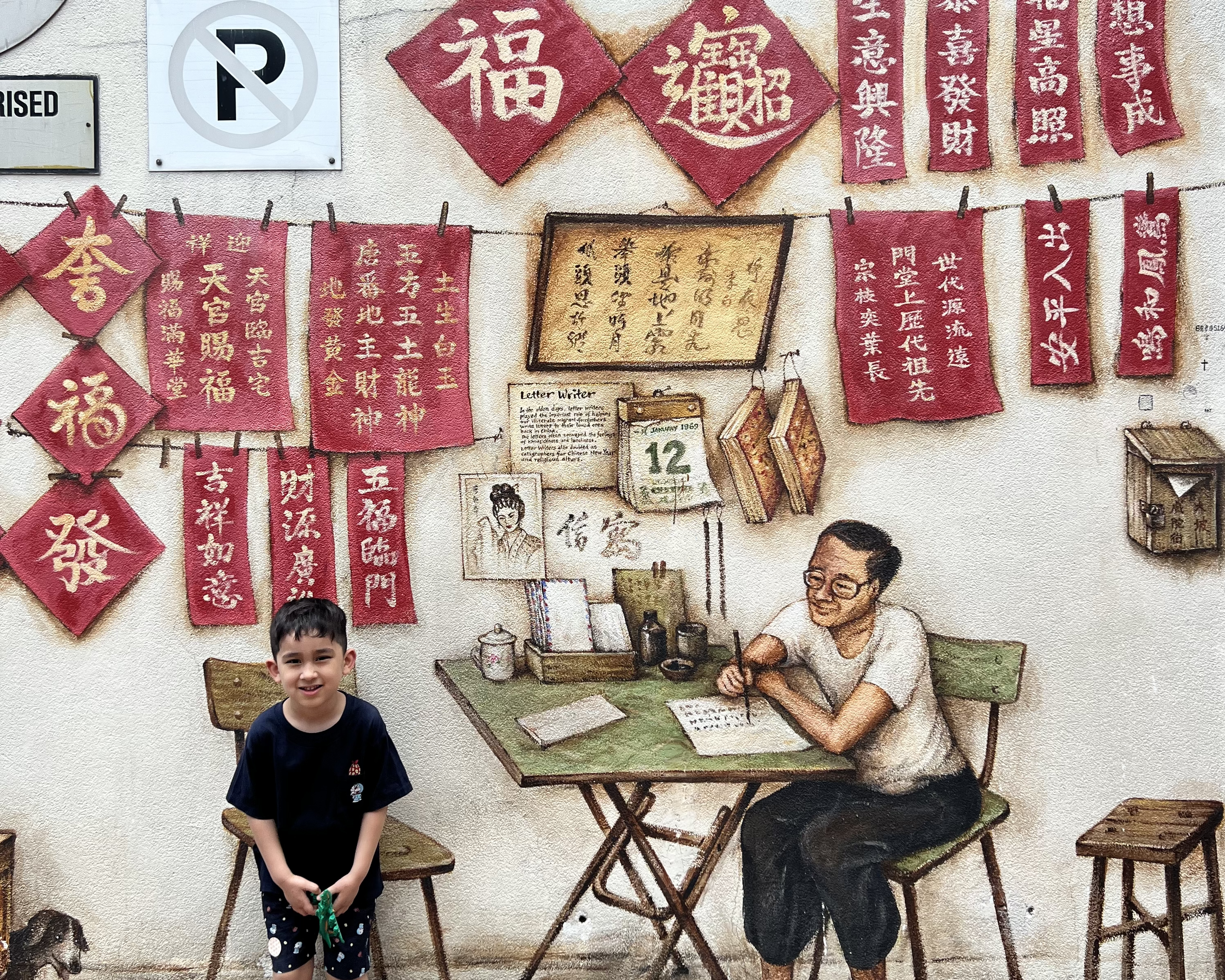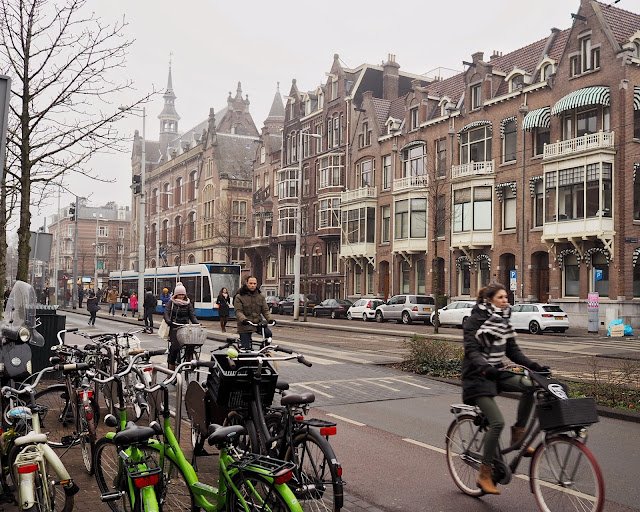Written for The Birthday Collective
From New York to Singapore: A Journey of Cultural Discovery
My child is not half-American and half-Singaporean; he is both American and Singaporean.

In the summer of 2022, when schools in America were closed and most kids attended summer programs with fun activities like sports, robotics or arts and crafts, I boarded the longest flight in the world from New York to Singapore with my almost 5-yea-old son Aidan to enroll him in a local kindergarten for a month.
It was a decision birthed out of both a challenging child care situation and a persistent longing for home that had intensified when the borders were closed during COVID.
Even the principal of the kindergarten was confused. “Shouldn’t Aidan be enjoying his summer in America instead of coming all the way to Singapore for… school?”
I had to laugh. I told her that it was my version of a summer camp, a true cultural immersion for my biracial son, whose dad is a born-and-bred Italian New Yorker and whose mom, i.e. me, is a Chinese Singaporean transplant who has lived all over the world and now calls NYC home.
Aidan had already been to Singapore twice to visit my family and friends. To him, it is a real-life Disneyland, where the streets are exceedingly safe and spotlessly clean and where he is treated like a little prince everywhere he goes and feasts at every meal. And because we have sent him to various Mandarin immersion schools in NYC since he was 2, he is also fully bilingual and feels completely at ease in Singapore.
On his first day of kindergarten, dressed in school uniform and brand new white shoes that we had just bought the day before, my little New Yorker immediately looked more Singaporean. When we got to the school gate, he held my hands tightly but walked confidently up to join a line of kids getting their temperatures taken.
Aidan was unfazed by the fact that he did not know any of the teachers or students, but I, on the other hand, was a nervous wreck, wondering if I had made the right decision to throw him into the proverbial deep end. Still I remained all smiles and assured him that he was going to have the best day ever and sent him off with a barrage of hugs and kisses.
When I picked him up in the early afternoon, he recounted his first day with an abundance of excitement, even though he barely remembered anyone’s names.
At drop off the next morning, there were kids who greeted him eagerly and invited him to play catch before morning assembly. By the end of that day, much to my amusement, he began to pepper his sentences with lahs and lehs as we rode the bus back to my sister’s apartment. It took him no time to learn Singlish intonation and he began to effortlessly code-switch when speaking to Singaporeans.
Aidan’s time at the kindergarten turned out to be an overwhelmingly positive experience for him, and while the schedule and rules at school were different from what he was used to, he simply adapted. The curriculum in Singapore is far more robust and rigorous than America, and he could not believe his luck when they got to learn Math through playing Minecraft in class! He also got to experience Racial Harmony Day (a concept that unfortunately does not exist in America, a country rife with racial tensions) by learning about and celebrating the different races in Singapore.
On Aidan’s last day, every single kid in his class made him cards with lovely messages like “I will always remember you” and “You are so nice”. Despite my initial reservations, sending him to “summer camp” in Singapore turned out to be the best decision yet.
Just before our return to New York, Aidan made an astute observation: “When I am in Singapore, I miss New York, and when I am in New York, I miss Singapore.” It felt like he took those very words straight out of my mouth; here we were, mother and son, bonded by the same intense love and sense of belonging to both places at once.
As the mother of a mixed race kid, I want Aidan to grow up knowing that he is fully both of his identities. He is not half-American and half-Singaporean; he is both American and Singaporean.
I hope that he never feels compelled to diminish any aspect of his identity to conform to societal expectations, and that he will grow up to appreciate the diverse perspectives, traditions and values that he is inheriting, recognizing them as gifts that have shaped his character and worldview.
Written for Ni Hao New York
Is Your Chocolate Made From Child Slavery?
10 Ethical Chocolates For This Halloween
Is the Halloween chocolate you hand out to trick-or-treaters every year made from child slavery?
According to a U.S. Labor Department report, 60% of the world’s cocoa supply for the mass-produced chocolate industry comes from West African countries of Ghana and Côte d'Ivoire. These regions are steeped in dire poverty and notoriously rife with labor exploitation and human trafficking, with the average cacao farmer making less than $0.80 per hour (compared to the liveable wage of $2.50 per hour) and an estimated 2 million children enslaved in the fields. It has been described as one of the world's worst child labor crisis.
In an Ethical Rankings Scoresheet based on research in the areas of environmental, animal welfare and human rights, all the top names like Kit Kat, Mars, M&M's and Toblerone fared badly. Despite pledging to eradicate child labor over two decades ago, none of the biggest companies like Hershey and Nestlé can still fully trace the origin of their cacao, much less guarantee that their chocolate is free from exploitation.
Our hope lies with the smaller craft chocolate makers who are devoted to the bean-to-bar movement and committed to sourcing cacao directly from the farmers or through co-ops that pay as much as thrice the commodity price of raw beans. These artisanal makers have more control over the process, from how the cacao is grown to the flavor profiles of the bars to the packaging that lands on the shelf.
Take the advice of Mariel Presilla, author of The New Taste Of Chocolate, “Look for chocolate from a company that gives real information about the region the cacao is from, the farmers, and why this or that program they support matters.” If you're not sure, don't be afraid to ask!
I know it can be incredibly time-consuming, so I have the research and found 10 ethical chocolate treats you can hand out this Halloween. You’re welcome.
1.Equal Exchange Organic Chocolate Minis ($28.00 for a box of 150)
2.Alter Eco Truffles ($44.99 for a box of 60)
3.Tony's Chocolonely Tiny Tony's ($44.99 for 100 pieces)
4.Justin'sMini Milk Chocolate Peanut Butter Cups ($29.94 for 6x4.7 oz bags)
5.Divine Chocolate Mini Pieces ($30.00 for 100 pieces)
6.TCHO Chocolate Squares ($47.99 for 100 pieces)
7.Theo Peanut Butter Cups ($27.48 for 12 pack)
8.UNREAL Snack Pack Variety Pack ($20.99 for 12 pack)
9.Lake Champlain Halloween Squares ($10.00 for 12 pieces)
10.Chocolove Peanut Butter Cups ($45.00 for 50)
* I reached out to Enjoy Life Foods and they informed me that their chocolate is not fair-trade certified, but that their supplier focuses on improving conditions for the farmers and is committed to operating without child labor. For that reason they are not on the list.
Want more resources? You can:
1. Read Buy The Change You Want To See
In this book written by founder of To The Market Jane Mosbacher Morris, she shares insights to inspire and empower you to create positive change as consumers.
2. Read Cocoa's Child Laborers
An investigative piece by The Washington Post, journalists speak with 12 child laborers from Burkina Faso working on cocoa farms and tell their heartbreaking stories, alongside reporting on what the industry is doing.
3. Read 2018 Chocolate Barometer
This comprehensive report provides an overview of the current sustainability developments in the cocoa sector and highlights critical issues that are require present attention.
4. Watch Rotten: Bitter Chocolate
This Netflix-produced documentary exposes shocking truth about the chocolate industry and addresses the many challenges faced.
5. Buy Slave Free Chocolate
A grassroots organization that aims to help eradicate child slavery in cocoa farms, this is an extensive list of companies that only use ethically grown cocoa.
“Do the best you can until you know better. Then when you know better, do better.” - Maya Angelou
Written for Ni Hao New York
A Beginner's Guide To Sustainable Tourism
Here’s why you should totally take that staycation.
